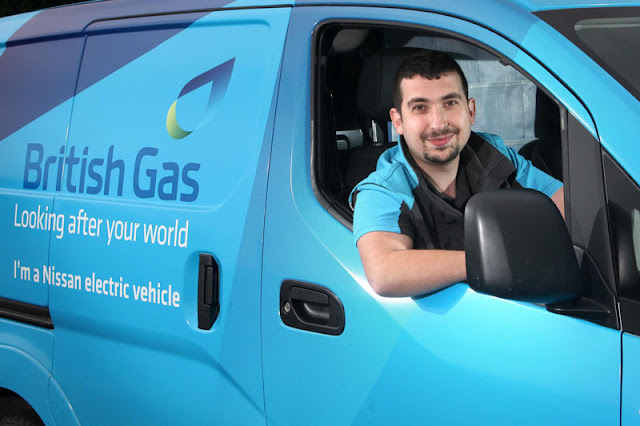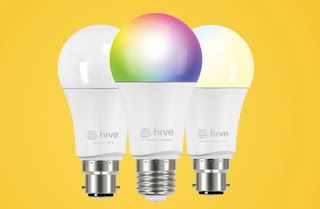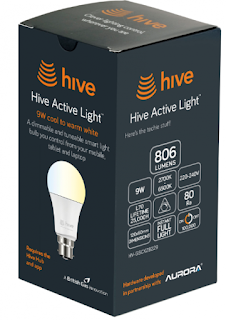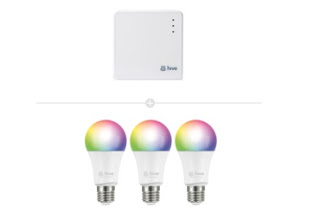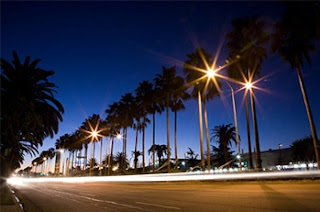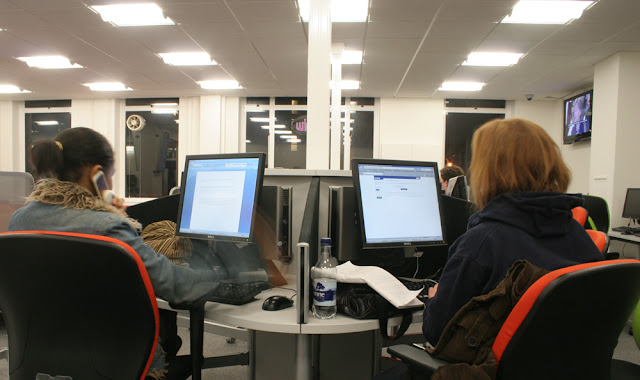TAG | Novel Energy Lighting
13
BHS turns to hipster lighting to revive dead brand
Comments off · Posted by admin in Uncategorized
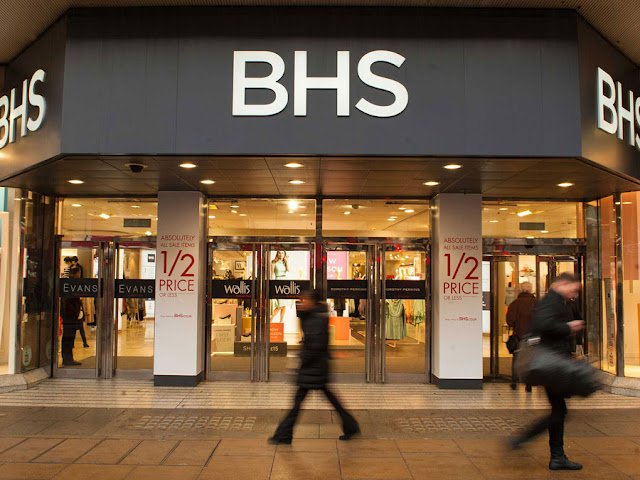 |
BHS is attempting to reinvent itself as a trendy online lighting shop. |
 |
| BHS has always gone against the grain when it comes to lighting by selling some interesting designs that belie its sedate image. |
Moribund retailer BHS, which closed its doors earlier in the year after decades as a High Street staple, is attempting to reinvent itself as a trendy online lighting store.
The company, which went into administration in April, has launched a new website, which features a whole host of lighting fixtures that would not look out of place in London’s trendy Shoreditch or Dalston.
As well as featuring traditional BHS staples such as middle-of-the-road bedding and beige cushions, the new website also sells retro filament lamps hanging from distressed railway sleepers, glass pendants and even the perennial hipster lighting favorite, the squirrel cage.
Any BHS regular will, no doubt, note the new lighting as a very considerable change of step for the formerly sedate and matronly retailer.
The BHS brand and website was bought by the Qatari owned Al Mana Group after the store closed its doors and the company intends to rebuild BHS’s reputation online.
The High Street regular always had a strong tradition of selling home lighting, so it is an obvious place to start as Al Mana Group looks to revive BHS’s fortunes.
The extensive lighting range dominates over 500 homeware products that are available online and many of the products are carbon copies of what was available in the old store, but at lower prices.
The new on-line shop is being run by David Anderson, the former BHS CEO
bhs · bhs lighting · british home stores · led lighting · Novel Energy Lighting · retail lighting
British Gas, the UK power utility that is blazing smart home trails with its Hive connected heating system, is now staking a claim to the residential smart lighting market by adding LED lamps to the system, a move that could signal the arrival of other major utilities into the home smart lighting arena.
Through a partnership with LED company Aurora Group, British Gas in June began offering intelligent Hive-branded LED bulbs that tie into the Hive home internet hub, allowing users to wirelessly turn lights on and off and brighten and dim them from anywhere via an app. Last week, it beefed up the offering with bulbs that will change colours and colour temperature.
The LED lamps, supplied by Aurora, are the latest addition to the ever-expanding Hive ecosystem. British Gas – the largest power utility in Britain – launched Hive Active Heating in July 2015 to allow customers to control heating and hot water from computers and gadgets either at home or from around the world. Early this year it added ‘smart plug’ and ‘smart sensor’ products; the plug lets nervous users switch off an outlet if they fear they’ve left the iron on, and the sensors send alerts if they detect motion through a door or window.
Lighting – called Hive Active Light – now fits neatly into the same scheme. Traveling users can, for example, schedule lights to switch on and change brightness as a burglar deterrent. Or they can do the same for their own mood and comfort when they’re at home. A new Hive bulb from Aurora now lets users change colours. Another lets customers tune the colour temperature of white light, in line with the emerging field of ‘circadian lighting’ in which blue-tinged white light can help stimulate people, and red-tinged white light can foster relaxation.
The new products follow on the heels of Hive allowing users to control the Aurora lights with verbal commands using Amazon’s Echo hardware and Alexa software. Hive also works with the ‘if this then that’ tool from service company IFTTT, which lets users program lights to trigger or respond to other things. Clearly, Hive has move beyond its heating roots.
‘Although we started out by launching our smart thermostat, we are more than a central heating business,’ Hive product and commercial director Tom Guy told Lux. ‘For some, the benefits of smart lighting will be about the peace of mind that, while you’re away on business or holiday, you’ve scheduled your lights to come on. For others, it will be about setting the perfect ambience to unwind after a stressful day. For these reasons, smart lighting has the ability to transform people’s experience of the space they live in.’
Guy added that Hive will continue to add functions, and to innovate ways for users to engage with the system. For instance, users can express vocal requests to Amazon’s Alexa in about 80 different phrases germane to the UK , including ‘Alexa, bosh my lights on,’ Guy said.
Internet of Things
It’s all part of the fledging Internet of Things (IoT) in which anything that can be digitised will be for the purposes of improving controls and operations, and of gathering and analysing data.
It is also key to the general beyond illumination movement that is driving the lighting industry in the modern era in which LED lamps are expected to
last for a couple of decades and thus deprive vendors of revenue from replacement sales, long their financial bread-and-butter in the days of traditional incandescent lighting.
Although many LED lighting vendors are touting smart lighting, the concept has been slow to catch on in the home, where it has had something of a limited, upmarket niche appeal. One reason is that in many instances users have to purchase expensive starter kits.
Still, smart home lighting appears poised for a breakthrough. In a recent survey, consulting giant Deloitte said that 40 percent of consumers identified lights as an appliance they would most likely replace with a connected device – tying for the lead with thermostats, which also weighed in at 40 percent. Next came security cameras, at 33 percent, followed by security alarms and fridges, at 30 percent each.
And in its recent annual ‘socket survey,’ Sylvania reported that 76 percent of people agree that ‘smart lighting will eventually replace regular lighting.’
Aurora believes that associating with a utility like British Gas, which has direct access to over 14 million homes in the UK, will help kick-start consumers into deploying Internet-connected lighting.
At your service
The partnership also moves Aurora into the realm of a service industry, which is where many modern lighting companies are trying to position themselves in the face of waning replacement hardware sales.
‘They’ve got 10,000 engineers on the road, so in terms of how they engage with their customers, its’ very, very direct,’ said Neil Salt, managing director of Aurora’s IoT division. ‘We’ve always been excited about what the opportunities would be beyond the bulb and the opportunity came along with Hive. They have real opportunity in terms of their scale and the reach into residential. You can’t ignore they’re a significant player in that space. With men on the ground it makes a significant difference in how the adoption curve will be because you have the face-to-face interaction with people.’
The ‘men on the ground’ aren’t selling Hive Active Light per se. But as service and support engineers who install the smart Hive thermostat, they put a human face to the system, and can help warm up users to the notion of adding smart products such as LED lamps. Customers can purchase the Hive-branded, Aurora-supplied bulbs through the Hive website or from a number of UK retailers including John Lewis, Curry’s, Amazon, Maplin and Screwfix. One original, dimmable bulb costs £19, a set of three costs £49, and five costs £79. The bulbs are rated at 806 lumens, nine watts, 25,000 hours and 2700K. Users control them via Apple or Android devices. Signals travel via ZigBee wireless connections.
The new nine-watt ‘cool-to-warm’ colour temperature bulb is priced at £29, £79 and £119 for one, three or five. The bulbs can range from a warm 2700K to a cool 6500K (in the counterintuitive numbers of the Kelvin scale, higher is cooler). Prices for the 9.5-watt full RGB colour bulb are £44, £119 and £179 for quantities of one, three or five.
Hive makes the bulbs available with either of the UK’s standard socket fitting – ‘screw’ or ‘bayonet.’ The bulbs do not require a Hive Active Heating system, but they do require a hub.
The hub is a small square device that looks like a broadband modem. Hive sells a starter kit including one hub and three bulbs for £89, £119 and £159 for the dimmable white, cool-to-warm, and colour bulbs, respectively.
Existing Hive Active Heating users can tie bulbs into their hubs. New users who want heating, lighting and the other Hive products including smart plugs and sensors can buy kits starting at £299 for a hub and heating, one bulb, an indoor motion sensor and either a door or window sensors; £349 includes an extra lamp plus a smart plug.
Customer retention
Although the Hive deal helps cast Aurora as more of a services company, Aurora’s revenues will come strictly from the conventional modus operandi of selling bulbs. Aurora sells them to Hive, which resells them to customers of its energy services.
The alliance with British Gas should help boost Aurora’s push into smart lighting. The Welwyn Garden City, England-based company is a big champion of IoT lighting. CEO Andrew Johnson is also founder and CEO of St. Petersburg, Florida-based IoT lighting start-up Gooee, which makes technology for companies like Aurora to embed in LED bulbs and luminaires. The Hive bulbs do not use Gooee technology, which is currently more geared to the commercial market, and which is not due out until early 2017
For British Gas, if Hive Active Light helps engage customers, it could help offset a decline in its customer base. The company – which claims to be the world’s oldest power utility with roots going back to 1812 – has about 14.5 million accounts, but it has been losing accounts. In the first quarter of this year alone, 224,000 customers bolted to competitors offering incentives for switching suppliers.
While lighting companies morph more into service entities, the Aurora partnership helps turn British Gas – traditionally a services outfit – into one more reliant on hardware sales. That corollary could help offset the monetary hit that utilities stand to take as people increasingly try to conserve energy and become more energy-efficient.
‘They’re in a bit of a dichotomy at the minute as an industry,’ noted Salt. ‘Everyone wants to buy less of what they’re selling – energy. It’s interesting to see when you look globally at energy and utility companies and how they are looking at creating value beyond energy. The lighting industry has its ‘value beyond illumination’ statement. I think every business as a whole, as things get commoditised, as markets change, it’s interesting to see how they adapt. Energy companies are well-placed. They’ve got their reach, they’ve got their scale, they’ve got customer connectivity. I think it’s great if they’re able to offer products in this ‘smart’ space. It can only be good for all of us to create awareness and serve as a catalyst.’
Of course there are other factors that could help rev up the market. Mass market retailer Ikea, for instance, recently said that it plans to launch an affordable smart lighting line by April.
It’s not clear that Hive Active Light has yet turned into a runaway success. Guy declined to say how many users have gone for it, other than noting that “demand has greatly exceed our expectations.” The broader Hive in general has signed up over 360,000 homes since launching as a heating offering in July 2015, and is the UK’s leading smart thermostat brand, according to Guy.
‘The number of people interested in smart home tech is growing all the time,’ he said. ‘We’re definitely reaching a tipping point.’
It’s still early days. If the market for Hive products and services does indeed heat up in lighting, then watch for more hook-ups between utilities and lighting companies like Aurora.
aurora led · british gas led · hive active light · internet of things · Novel Energy Lighting · smart lighting · wireless lighting
4
LA installs street light sensors that can hear car crashes
Comments off · Posted by admin in LED
 |
| LA’s is all set to expand its smart city capabilities by installing all hearing street lights |
Los Angeles is adding all-hearing sensors to street lights that will be able to hear car crashes and report them to emergency services and first responders.
The move is part of a new pilot scheme to expand LA’s smart city capabilities. The city authorities intend to use the smart city to improve public safety and support services.
The city already has a connected street lighting infrastructure, but new technology is being deployed to improve LA’s Internet of Things (IoT) functionality.
Enabled light poles will feature microphone modules that will be able to monitor, aggregate and visualize ambient sound in various areas of the city.
The modules can be used to increase the response times of emergency vehicles by detecting the sound of a collision. They can also be used to monitor noise and emission levels.
‘We generally have a very rudimentary understanding of how noise and sound propagate in public and open spaces in the city,’ commented Dietmar Offenhuber, assistant professor at Northeastern University.
‘By attaching sound sensors to street lighting infrastructure, we get for the first time a very articulated and diverse reading of the urban soundscape. This very granular information allows us to understand how the city and the soundscape influence and impact one another.’
‘By attaching sound sensors to street lighting infrastructure, we get for the first time a very articulated and diverse reading of the urban soundscape.’
Los Angeles currently has more than 200,000 street lights installed throughout the city, which equates to being one of the largest street-lighting networks in the world.
‘If we imagine that every light pole can collect all kinds of data then there is so much more value that street lighting can afford to our citizens in addition to providing illumination,’ commented Ed Ebrahimian, director of the Bureau of Street Lighting for the City of Los Angeles.
Last year, the Los Angeles Bureau of Street Lighting began to install a connected street lighting management system developed by Philips, which uses existing mobile networks and cloud-based technologies to control street lights and analyse how much energy each light is consuming.
connected lighting · intelligent cities · intelligent street lights · Novel Energy Lighting · streetlight sensors
apple led · apple lighting · intelligent lighting · lighting control · lux review · Novel Energy Lighting
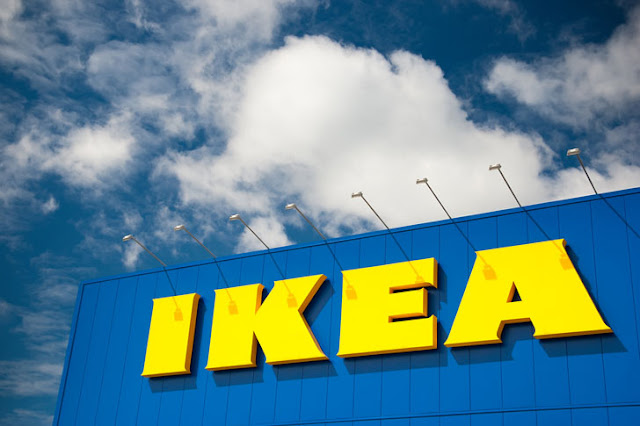
Innovative retailer Ikea is setting its sights on the smart lighting market.
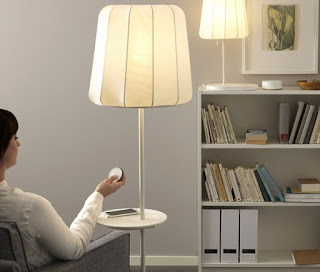
Ikea’s plug and play solution features a tiny transmitter that has been installed within the luminaire, which can communicate with a remote control.
ikea · ikea led · intelligent lighting · led lighting · Novel Energy Lighting · remote control lighting · TRÅDFRI LED
26
Meet ‘Alexa’ Amazon’s new device that can control your home lighting
Comments off · Posted by admin in LED
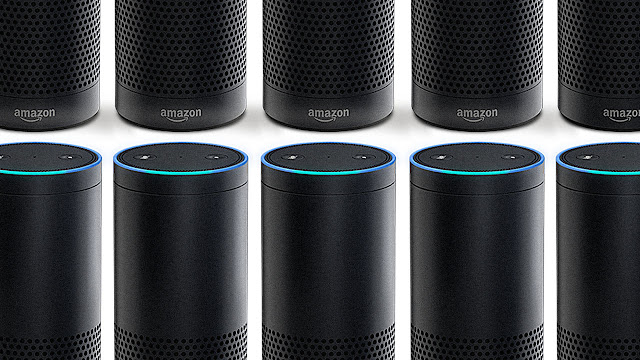 |
The Echo is a smart-speaker that responds to the name ‘Alexa’. |
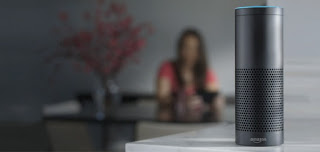 |
| Philips Hue will also be compatible with the Echo, meaning you will be able to adjust the strength of your light fixtures using your own voice. |
The Amazon Echo will feature a voice control capability that will allow you to turn off your lights and adjust your central heating with the sound of your voice. The Echo is a smart-speaker that responds to the name ‘Alexa’.
Amazon has announced a partnership with Hive, the smart-home platform developed by British Gas. The Echo will be compatible with Hive Lights and and Hive Active Heating.
Philips Hue will also be compatible with the Echo, meaning you will be able to adjust the strength of your light fixtures using your own voice.
As well as the Echo, Amazon are also launching the cheaper second generation Echo Dot mini-speaker, which features an even more nimble ‘Alexa’, which can trigger pre-set home lighting scenes. This means that you will also be able to voice-activate colour changing as well as dimming your lighting.
So, if you have created a sunny lighting scene in your bedroom that involves orange and red hues that adjusts in brightness as the sun sets, you could activate this by simply saying, ‘Alexa, turn on scene sunny day’ and she will happily oblige, (that is if you want to ascribe a sex to a gadget designed by a multi-billion dollar corporation out to get you to spend more money.)
You will not be able to ask ‘Alexa’ to change the colour of individual light sources if you are using the Hue, but you will be in with a chance if you own Hue’s competitor Lifx, which is compatible with Amazon’s speaker.
Hue is able to communicate with ‘Alexa’s’ arch-enemy ‘Siri’ though to change the colour of individual light sources.
The Amazon Echo will be available to buy from the 16th of September 2016.
amazon alexa · amazon echo · home lighting control · light scene control · Novel Energy Lighting · remote control lighting

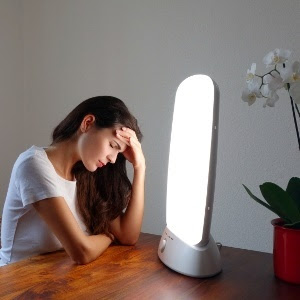
A new study has found that exposure to bright light can restore the sinking sexual desires of men during the cold winter months.
Scientists from the University of Siena in Italy have discovered that sitting in front of a light box can increase testosterone levels, boosting sexual satisfaction in the process.
The study was comprised of 38 men who had complained of spiraling sexual desire. Half of the group were treated with a light box, while a secondary group were exposed to an adapted light box that was wired to produce significantly less light.
The participants received doses of light for an hour, during the early morning, for two weeks straight.
The scientists discovered when the study was complete that the men exposed to the bright, unregulated light, recorded a tripling in sexual satisfaction, while the men who sat in front of the
‘In the northern hemisphere, the body’s testosterone production naturally declines from November until April and then rises steadily through the spring and summer with a peak in October.’
adapted light found that their libido remained significantly depressed.
When the results were more carefully considered it was found that the men who reported better sex had significantly higher levels of testosterone.
‘In the northern hemisphere, the body’s testosterone production naturally declines from November until April and then rises steadily through the spring and summer with a peak in October,’ Prof Andrea Fagiolini, who led the study commented.
This fact is mirrored in spikes in the birth rate, as June often records the highest rates of conception.
The libido-restoring light box contained bright fluorescent tubes that emitted light at ten times the intensity of the the light emitted by household fixtures.
Light boxes are also used to treat Seasonal Affective Disorder (SAD), which is a depression that strikes during the winter months when the hours of available daylight are at their lowest.
The scientists believe that the light box exposure inhibits the pineal gland in the centre of the brain, which prompted the noted increase in testosterone production.
Testosterone injections, antidepressants, and other medications can be used to treat a collapse in sexual desire, but the use of light would have none of the side effects associated with these options. The results will be presented at the European College of Neuropsychopharmacology (ECNP) Congress in Vienna later in the year.
Perk your living space up with new lights! Visit www.novelenergylighting.com today to explore our range of top quality LED lighting
led lighting · libido lighting · light box · Novel Energy Lighting · philips led · pineal gland

George Washington crossing the Delaware River during the American Revolution. Don’t be lulled into inaction like the British in Boston Harbour in 1773….IoT will be the next revolution in the lighting industry and you need to be prepared.
Gordon Routledge of Revo reports: The next revolution in lighting has arrived in the form of IoT (Internet of Things) and it’s going to change everything.
Ironically, I used to get exactly the same response when I spoke about LEDs some 15 years ago. Change takes time as Bill Gates once said:

I tend to be an early adopter of technology but sometimes I fail to spot the trend. I could not, at first, for example, understand YouTube. Why would you want to make your own video and share it on the Internet? Why would you want to watch that video on a tiny screen on a mobile phone, while sitting on a bus? Yet 11 years on Lux has its own YouTube channel, which has clocked up over 1.4 million views. This is, of course, quite pathetic, when placed in comparison with the multi-millions of views that funny cat videos attract.
The birth of YouTube came well before smartphones and high speed mobile connectivity, it needed some other megatrends to develop for it to rise to its full potential
Now, let’s get one thing clear, the term ‘smart’ is not a replacement for dimmable. Just because you can dim your lights with a smart phone does not mean that you are at the forefront of the IoT revolution. Instead IoT hides in various overused and sometimes difficult to understand terms, Connected Lighting, Smart Cities, LiFi and PoE, being just a few. These are the trends that are helping IoT to take off.
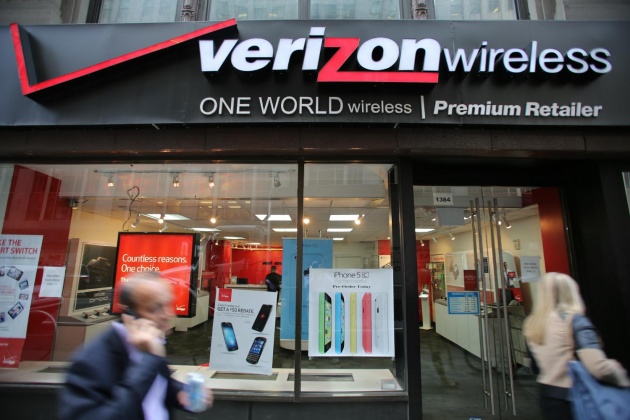
Verizon, the American communications company have bought Sensity in order to widen their IoT offering.
So why has the world changed this week? For starters Verizon, one of the world’s largest mobile phone operators, purchased Sensity Systems. Hugh Martin the CEO spoke at one of our conferences two years ago, his vision was simple, all lights are going to be replaced with LED over the next ten years, so, he said, when we do the conversion let’s pack them full of sensors, cameras and wireless networking devices and use the network to build new business apps.
It was jaw dropping for our audience at the time, but Hugh was right on the money. While Sensity’s gun shot detection app may not find a ready use in Europe, Verizon clearly see value in some of their products that they can offer to their millions of subscribers, leveraging the data collected by millions of lighting points.
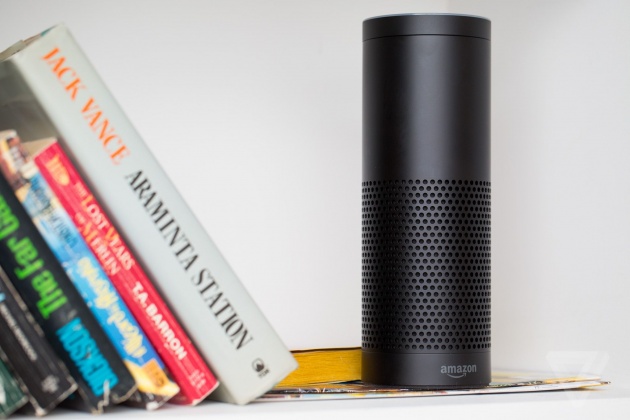
The Amazon Echo, which allows users to switch on their lights with the sound of their own voice.
Next up, Amazon. The multi-billion-dollar corporation has added the ability to control lighting to its Alexa digital assistant. If you haven’t had cause to buy one yet, Alexa is part of the Amazon Echo, which is a smart speaker that is able to respond to voice commands.
For years we have talked about the death of the light switch and the reason given to prevent this is that people don’t want to reach for a smart phone in the middle of the night to turn the lights on, even though your smart phone is surely going to be closer to your bed than the nearest light switch.
The giving of verbal instructions could well be the true intuitive lighting control, but it won’t work for me, as my wife says I have a habit of talking in my sleep, and lighting is frequently the subject.

The Yellow Dot program allows manufacturers to develop LEDs that work with Philips’ indoor positioning technology.
Of course, Amazon won’t be making lights, although they do have their own brand, Amazon Essentials, so rule nothing out when it comes to anticipating the next move of this cunning company.
Amazon currently relies upon other manufacturers to make devices compatible with Alexa, such as LiFx smart lamps. If I made residential lighting controls I would be very concerned about this move. Lighting control is moving from the cupboard to being in the lamp, and the user interface is migrating from the wall plate to an Amazon owned device.
Finally, Philips has open sourced their light based indoor location system, which is perhaps a canny move for the future. Many smaller OEM’s can’t play in the IoT space and clients and designers will not want to be held to ransom in order to buy Philips fixtures to implement a system.
It also gets Philips away from the dirty business of having to sell rapidly commoditising fixtures. Instead they simply collect data from lighting and sell it on to the end user. Thus data starts to replace lamps as a continuous revenue stream.
These are, of course, just announcements from the last week. But if you throw into the mix Cisco and Acuity Brands buying tech companies with gusto and huge, but lesser known, companies such as Delta Electronics who snapped up Loytec Electronics earlier in the year, you start to realise that the stage is being set for a revolution.

Big technology companies want to use the installation of LEDs to harvest as much data as they can.
It’s becoming clear that big technology companies want to be active on the lighting scene. They don’t want to join in our fun debates about standards, colour quality, lamp bases, glare and flicker though. All they want to do is gain access to the billions of lighting fixtures in the word and harvest the data they collect, enabling new business models to be built that don’t exist today.
You may not believe me, and I’m sure you can find hundreds of reasons as to why it just will not happen…but, read my lips, in ten years time IoT will be on everyone’s mind.
intelligent connected lighting · internet connected lighting · internet of things · iot · lux · Novel Energy Lighting
Smart traffic lights to ‘communicate’ with drivers to inform them when they are about to change. PLUS: Saudi scientists create ‘fastest li-fi luminaire’. AND: New building standard aims to protect the health of occupants.
intelligent cities · led lighting · led street lights · lifi · lifi traffic lights · Novel Energy Lighting · smart street lights · smart traffic lighting
A THIRD of Britain’s office workers hate their lighting, a study by the respected pollsters Ipsos has discovered.
Some 32 per cent of white-collar employees told the researchers that they were unhappy with the light intensity, with only a fifth were able to alter the light level.
The results are sure to bolster critics of the lit environment in the nation’s commercial workplaces, who have slammed the sector for a lack of creativity. Top lighting designer Paul Nulty, founder of Nulty+, tweeted: ‘Bad lighting effects workplace productivity. Who’d have thought!?’
UK offices still have a preponderance of so-called Category 2 lights – recessed, deeply-louvred fittings designed to minimise reflections on computer screens – which deliver a gloomy environment.
The study of over 12,000 workers across 17 countries showed that the UK workers are the least satisfied with their office ambience. The study appeared to add weight to the argument that local lighting control boosts employee engagement and satisfaction, as the biggest issue was a lack of control. Only 39 per cent of respondents say they can adjust the temperature, while a mere 21 per cent can alter the lighting.
The so-called Category 2 light fixture has long dominated the UK’s offices, but its deep louvres are no longer necessary to prevent reflections on computer screens. Picture: Andrew Malone
‘This could be seriously affecting the concentration, productivity and engagement levels of workers, with the study showing that a lack of flexibility and control over the physical work environment correlates with a lack of engagement’, the study said. In contrast, highly engaged employees are those that have the most flexibility over how and where they work.
The situation in the UK is likely to be influenced by the country’s dominance of open-plan design, with 49 per cent of workers based in this kind of space due to its cost-saving benefits. However, this can limit employees’ individual control over their environment.
Christine Congdon, director of Global Research Communication told Lux: ‘Our research has consistently shown that the most engaged workers are those who have autonomy over how and where they work, whether adjusting the temperature, lighting, or workspace to suit their needs. ‘When people feel like they have choice and control over various aspects of their physical work environment, it leads to greater satisfaction overall.
‘Everybody is different and personal preference will depend on an individual’s natural physiology, their mood on a particular day and the task they are working on. To cater to these constantly changing needs, employers should pay more attention to providing a range of working environments, including the ability to adjust workspace basics as required.’
The study was commissioned by office furniture manufacturer Steelcase.
Visit us at www.novelenergylighting.com to explore our range of office lighting products, including LED panels and LED tubes. Call us to discuss your needs: 0208-540-8287, or drop us an email: sales@novelenergylighting.com
Main picture copyright Ripton Scott 2016
commercial lighting · led panels · led tubes · Novel Energy Lighting · office compliant lighting · office led · office lighting · productivity lighting

